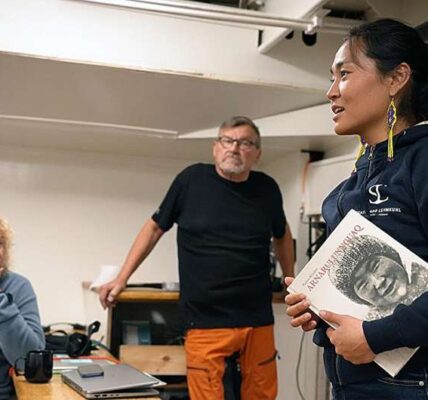The difficulties of the Svalbard seed repository illustrate why we need to prevent climate disaster rather than plan for it

At a latitude of 78 degrees north lies the northernmost city in the world. It is an odd place. Way above the Arctic Circle—a mere 814 miles from the North Pole—Longyearbyen, in Norway’s Svalbard archipelago, is home to only 2,400 people but more than 1.3 million seeds.
The Svalbard Global Seed Vault is an underground storage facility designed to secure seeds to “ensure that food crop varieties are not lost” in the event of a global crisis such as war, terrorism or climate change. Touted as “our insurance policy that we’re going to be able to feed the world in 50 years,” the vault has been situated at a location and depth in the Arctic intended to ensure that the seeds will not rot or sprout and will be available for use when needed. For further safety, the vault is refrigerated to zero degrees Fahrenheit and designed to withstand a magnitude 10 earthquake. (For comparison, the quake that produced the tsunami that devastated Fukushima, Japan, was magnitude 9.) On the surface, the seed repository sounds like a very solid idea. But it rests on shaky foundations.
The vault opened in 2008, following on an earlier iteration in which seeds were stored in a nearby coal mine. It is not specifically a response to the threat of climate change, but it is an epitome of climate-adaptation thinking. The logic behind it goes like this: Climate change is underway, and our political systems seem to be incapable of meaningful action to stop it, so we have little choice but to plan for a future when we will face serious climate disruption.
Chief among the disturbances will be disruptions to the food supply as punishing droughts and heat waves lead to widespread seasonal crop failures and important individual food species become impossible to grow in the places where people are used to growing them. When that happens, a supply of diverse seeds—including some adapted to hotter, harsher climates—may be just the thing we need to protect our food systems and stave off disaster.
It’s good to be realistic about the climate future we are facing, but the seed vault embeds a conceit common to many adaptation plans: we know what we are facing, so if we plan well, things will go well. But already chinks in the vault’s armor have appeared. In 2017 the vault suffered a flood caused, ironically, by climate change. A very warm (but increasingly not exceptional) winter combined with heavy spring rain to thaw part of the surrounding permafrost, flooding the entrance and threatening the safety of the seeds. Changes have been made to the vault’s entrance to lessen this particular risk, but the breach—less than a decade after the vault opened—shows that we humans are not very good at anticipating change, even in the short run.
Boosters of the seed vault sustain the logic of their effort in part by effacing the embarrassment of the flood. The timeline of the vault on the website of the vault’s partner, CropTrust, does not mention it. When asked about the flood by a reporter for the Guardian, a representative of the Norwegian government, which owns and operates the vault, said: “It was not in our plans to think that the permafrost would not be there and that it would experience extreme weather like that … The question is whether this is just happening now, or will it escalate?”
You don’t have to be a climate scientist to know the Arctic is losing permafrost; in Svalbard, the dislocation is obvious even to an untrained eye. And it’s long been known that the Arctic would warm more rapidly than the rest of the globe: Princeton University geophysicist Syukuro Manabe predicted this effect—known as polar amplification—in the 1970s (he belatedly won a Nobel Prize in 2021 for this work). Today the Arctic is warming four times faster than the rest of the planet. Even if the entire world were to stop burning fossil fuels now, global temperatures would not return to normal for decades or centuries to come. Given the state of action (or inaction) on climate, we don’t have to ask whether Arctic warming and permafrost loss will escalate. It is a near certainty.
By Naomi Oreskes, a professor of the history of science at Harvard University. She is author of Why Trust Science? (Princeton University Press, 2019) and co-author of The Big Myth(Bloomsbury, 2023).





The critique of the Arctic Seed Vault is thought-provoking! It’s essential to recognize that while preserving seeds is important, we should also focus on improving our ecosystems and communities now, rather than just safeguarding for an uncertain future.
Interesting perspective! The idea that the Seed Vault represents flawed logic in climate adaptation is compelling. It prompts us to think about how we can prioritize sustainable development alongside preservation efforts.